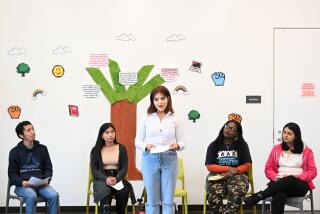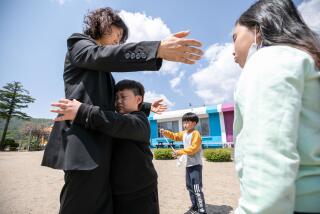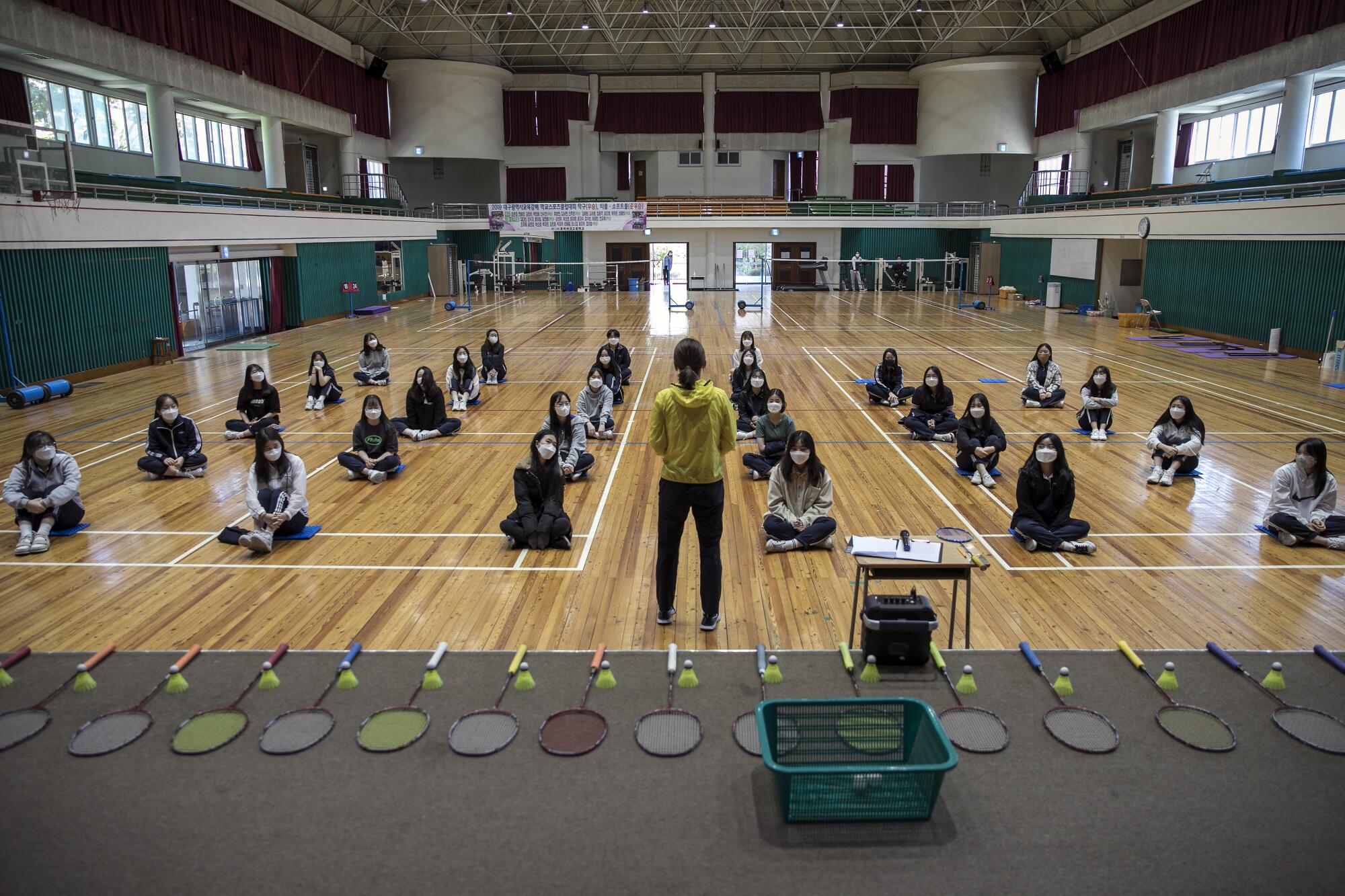
- Share via
DAEGU, South Korea — They’d been rehearsing for this moment for days.
It was a complex choreography with more than 300 unpredictable moving parts, the stage a labyrinth of multiple wings and floors. The timing and precision were made trickier still by a wheelchair, a potential wardrobe change and months of pent-up teenage energy.
The blocking was fussed over. Red and blue tape was pasted in measured intervals on the floor. Stand-ins made dry runs to anticipate any mishap. Videos with instructions were disseminated ahead of time to be studied and memorized.
Then early Wednesday, as a clatter of footsteps approached, it was showtime. Futures were at stake, public health hung in the balance. A missed cue could undo it all.
The school was ready to open its doors.
::
Gyungbuk Girls’ High School is smack in the middle of Daegu, which was at the center of South Korea’s coronavirus outbreak. In late February, the southeastern city known for its scorching summers and sweet apples instead became infamous for what was then the largest cluster of the deadly virus outside China.
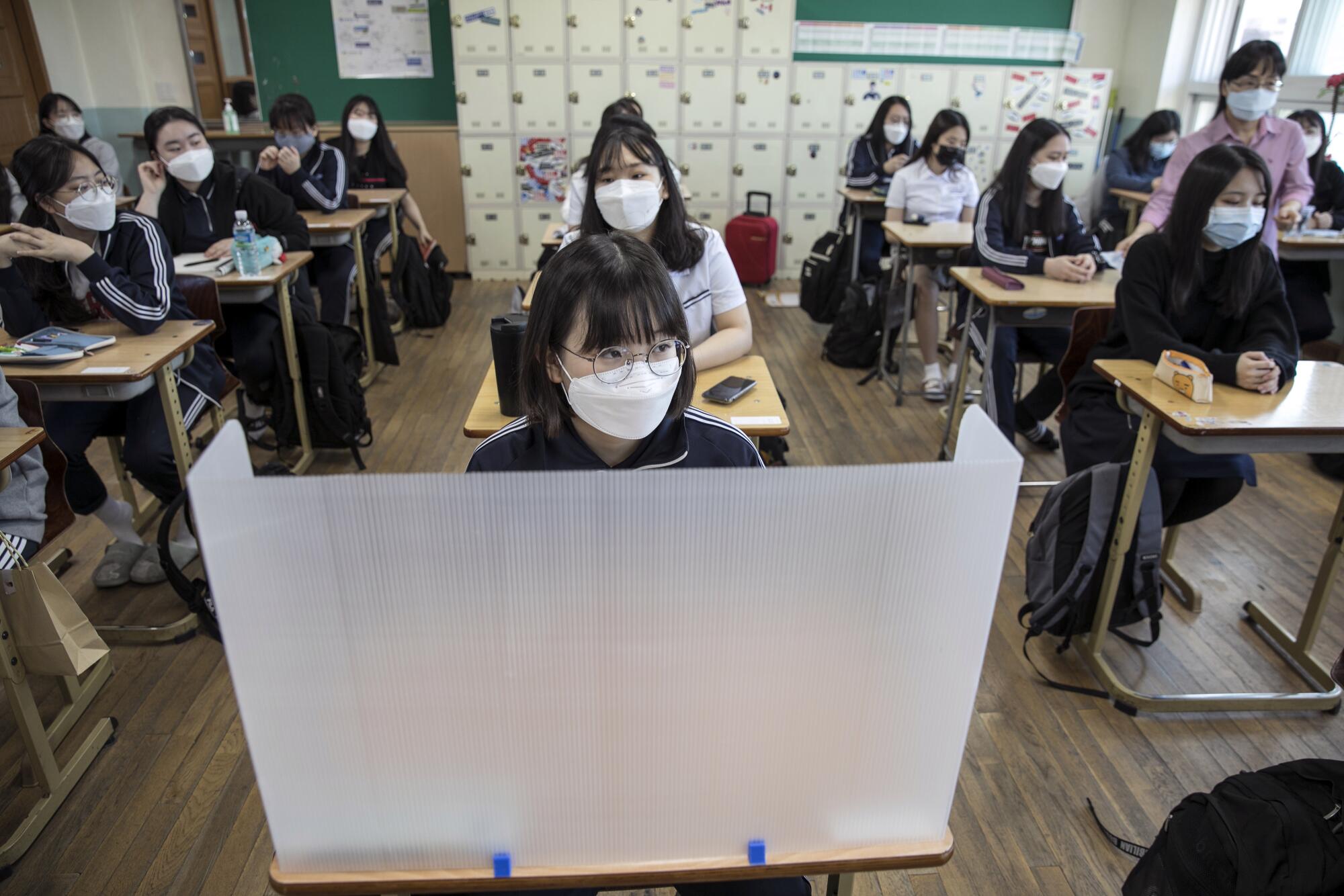
The outbreak that started at the Sunday services of a cult-like Christian group crept across the city. Thousands fell ill, hospitals were overwhelmed; some died at home waiting for hospital beds to open up. Streets and marketplaces emptied out overnight, giving the city the air of a ghost town. The U.S. State Department categorically advised Americans to stay away.
The surge in cases came on the eve of the new school year, which in South Korea typically starts March 2.
The start of classes was pushed back a week, then two, and then again and again. Similar fates would befall schools across the world as the pandemic spread; by latest count, 1.2 billion students in 153 countries were being kept out of school by lockdowns to contain the virus. Where classes did resume as the epidemic has ebbed, cautionary tales arose — a preschool in Singapore, schools in northern France and a boarding school in Australia were each forced to shut down when infections cropped up.
As the virus swept through Daegu, Lee Hwa-jeong, vice principal at Gyungbuk, showed up day after day to the deserted high school. She and other educators around the country were navigating countless directives from education officials, all the while wondering when, and how, students would once again stream through hallways.
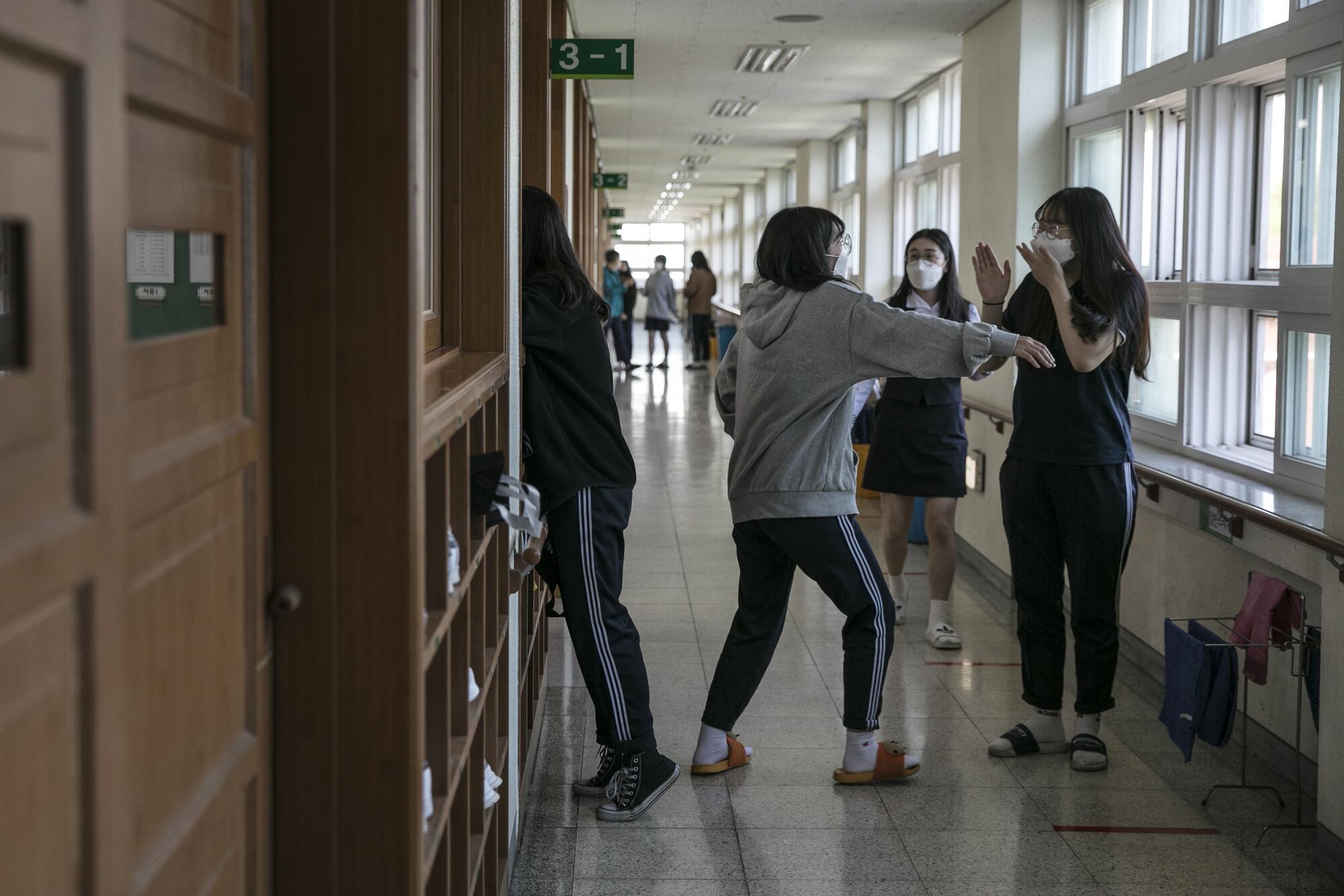
She knew anxiety was building for seniors facing a tough battle ahead in South Korea’s unforgiving college entrance race. Also weighing on her mind were the school’s few dozen special-needs students, for whom time away from the classroom would be even more detrimental. And the underprivileged students who she knew got from teachers and friends the love and attention they didn’t get at home.
::
Hauling backpacks and rubbing bleary eyes, the first students walked through the school’s gates shortly after 7 a.m. Wednesday morning under crisp blue skies. Teachers holding orange traffic control batons directed them to walk single file along a roped-off corridor into the school’s west entrance, where they were shuffled past a thermal imaging camera.
It was at once surreal, yet seemed oddly second nature to the kids, a rite of passage altered.
College counselor Kim Jung-ae — wearing two masks, one over the other, as an extra precaution — enthusiastically welcomed most students by name even though only their eyes were visible. To minimize crowding in hallways, half the students were directed to use one staircase; the other half, stairs on the opposite end of the building.
Across South Korea, high school seniors resumed classes this week; other grades were scheduled to return in phases in the coming weeks. At Gyungbuk, that meant 310 restless 17- and 18-year-olds would be first to undergo the experiment that is post-pandemic school life.
As the girls filtered into their homerooms, teachers had the unenviable task of enforcing the virus’ heartless mandate: no hugs or touching friends whom the students hadn’t seen in months.
“Walk separately!” “Break apart!” they interjected as gleeful girls greeted one another.
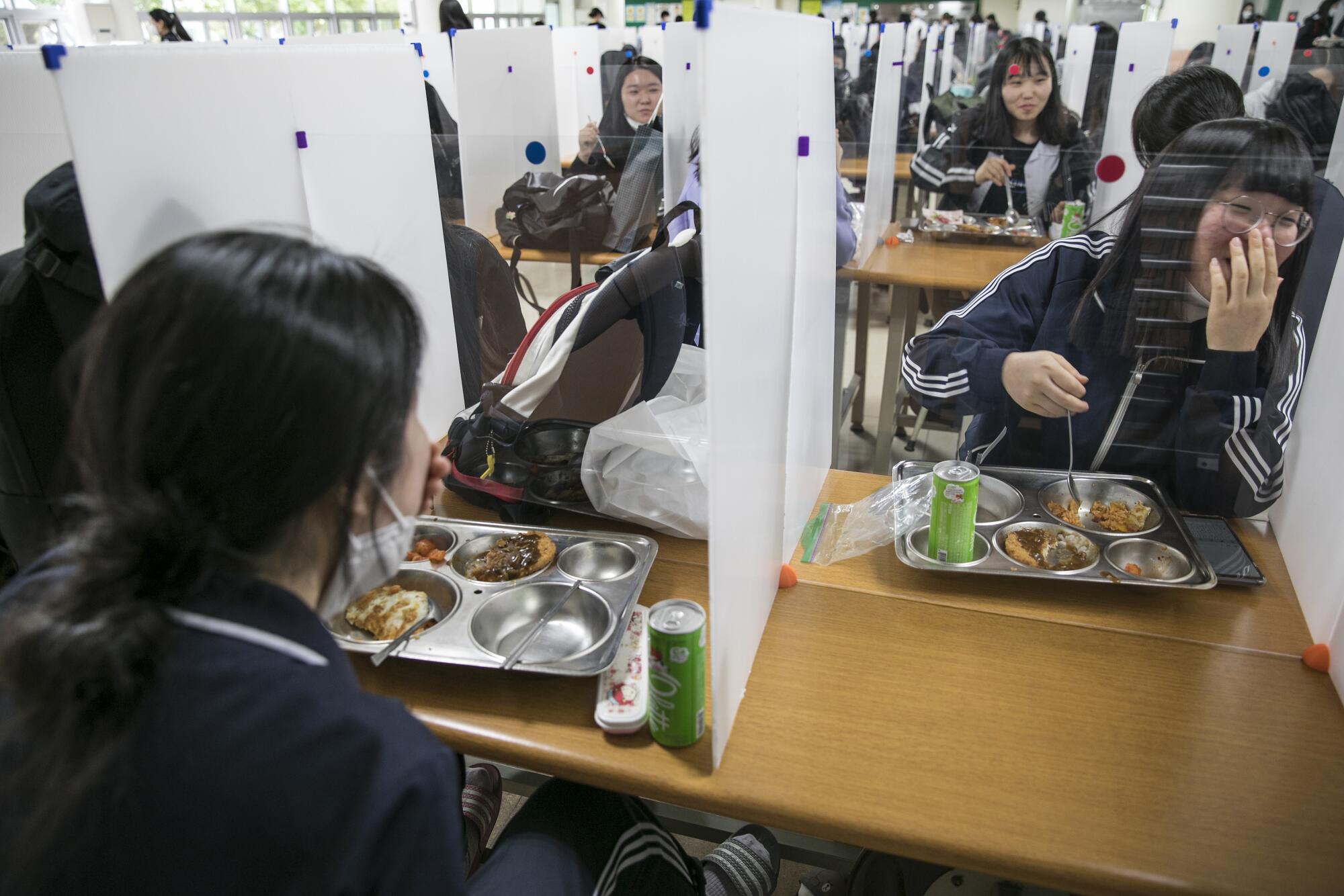
Kim Kyung-mi and Moon A-reum, friends since the 10th grade, hadn’t seen each other since the start of winter break in December. Even though they’d talked almost daily on their smartphones, they appeared amazed to be seeing each other in the flesh and blood, chatting up a storm about how they’d spent the months cooped up at home and the latest YouTube videos they’d seen.
“There’s so much we have to talk about,” Kim said.
Other girls putzed around with an infrared thermometer, touched one another’s hair, remarking on the length, and used disinfecting tissues to wipe down lockers plastered with stickers bearing K-pop stars’ names. Many hugged or clutched hands before jumping back when admonished by a teacher.
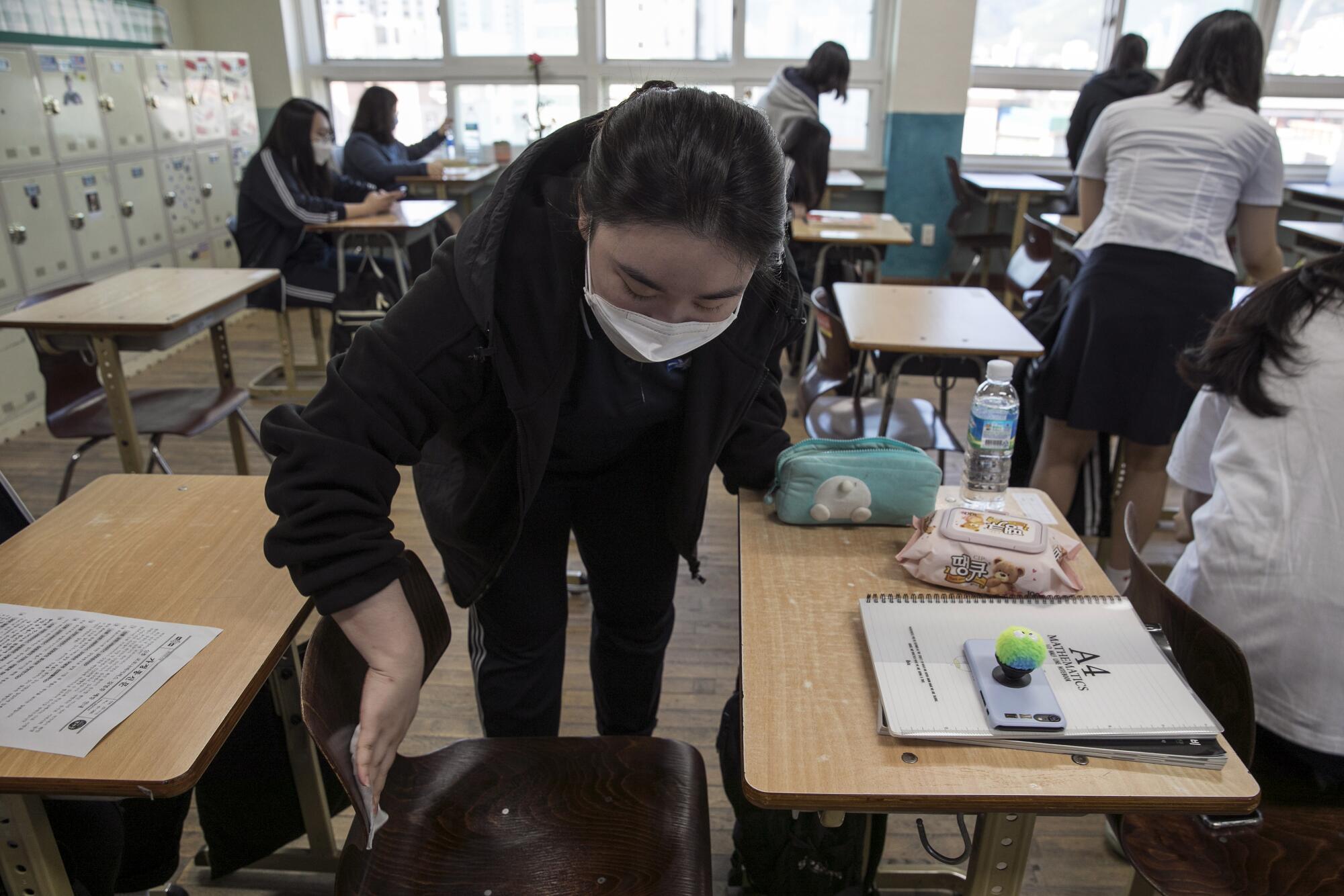
“Kids will be kids,” principal Nam Young-mok said, remarking to fellow teachers how hard — if not impossible — it was to keep the kids distanced from one another. “If we get just one, we’ll have to shut the entire school down.”
::
Elsewhere in South Korea on Wednesday, 66 high schools in one district in the city of Incheon abruptly sent kids home after just two periods when a student tested positive for the virus.
At Gyungbuk, none of the students showed a fever. Desks were spaced out, and plastic barriers lined the desks in the front of the room directly facing the teacher. To minimize students’ movements, classes were shortened to 40 minutes with five-minute breaks, down from the typical 50 minutes with 10 minutes in between.
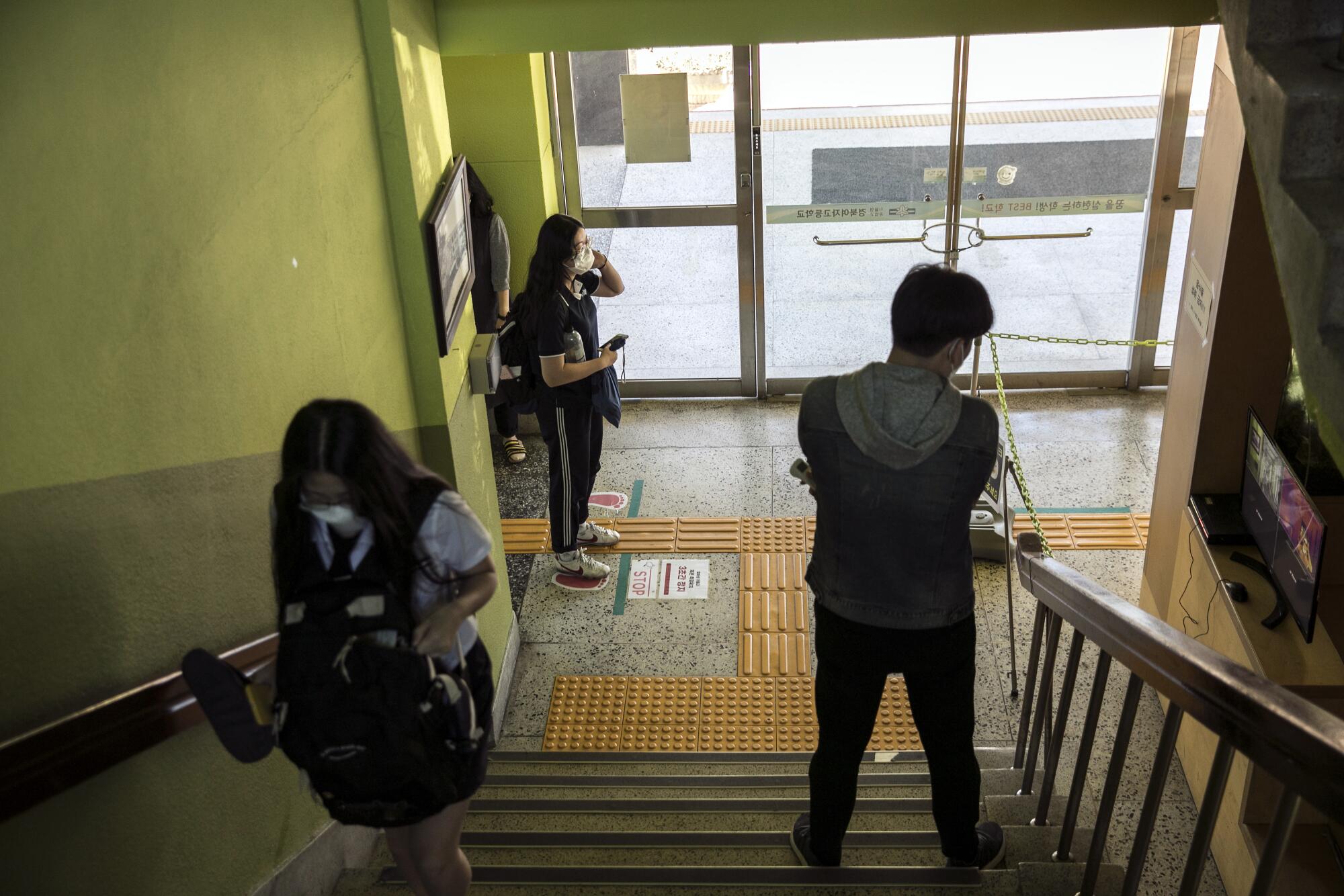
During the months that school was out, Kim, the college counselor, received daily phone calls and messages from students and their parents concerned about what the continued delays would mean for the kids’ futures. Many of her students are ambitious — on a vision board on her wall where students scrawl their future aspirations, one student wrote across the top: “President.” Farther down, another had scribbled: “Biggest star in the universe.”
“They say they were studying hard on their own at home, but there’s only so much they can do,” Kim said.
Schools had been conducting online classes through apps, videoconferencing and prerecorded lectures since April.
Choi Da-young, a 17-year-old senior, said she’d been stuck at home with her two siblings — both middle schoolers — all three of them resigned to online classes. Staring at a screen for long stretches gave her a headache, she said. The school year didn’t feel like it had actually started until she saw her teachers and friends on Wednesday.
“Now it really hits home that I’m a senior,” she said.
::
Girls stood evenly spaced out on red tape marking the gym floor. The masks would prove a challenge: This was fourth period, PE.
“Let’s just do five jumping jacks, since you have the masks,” the teacher said.
After the brief warm-up, the girls each grabbed a badminton racket and shuttlecock and paired up in twos. They spread out across the room and squealed as they volleyed back and forth across a net, appearing to momentarily forget college, masks and even the coronavirus.
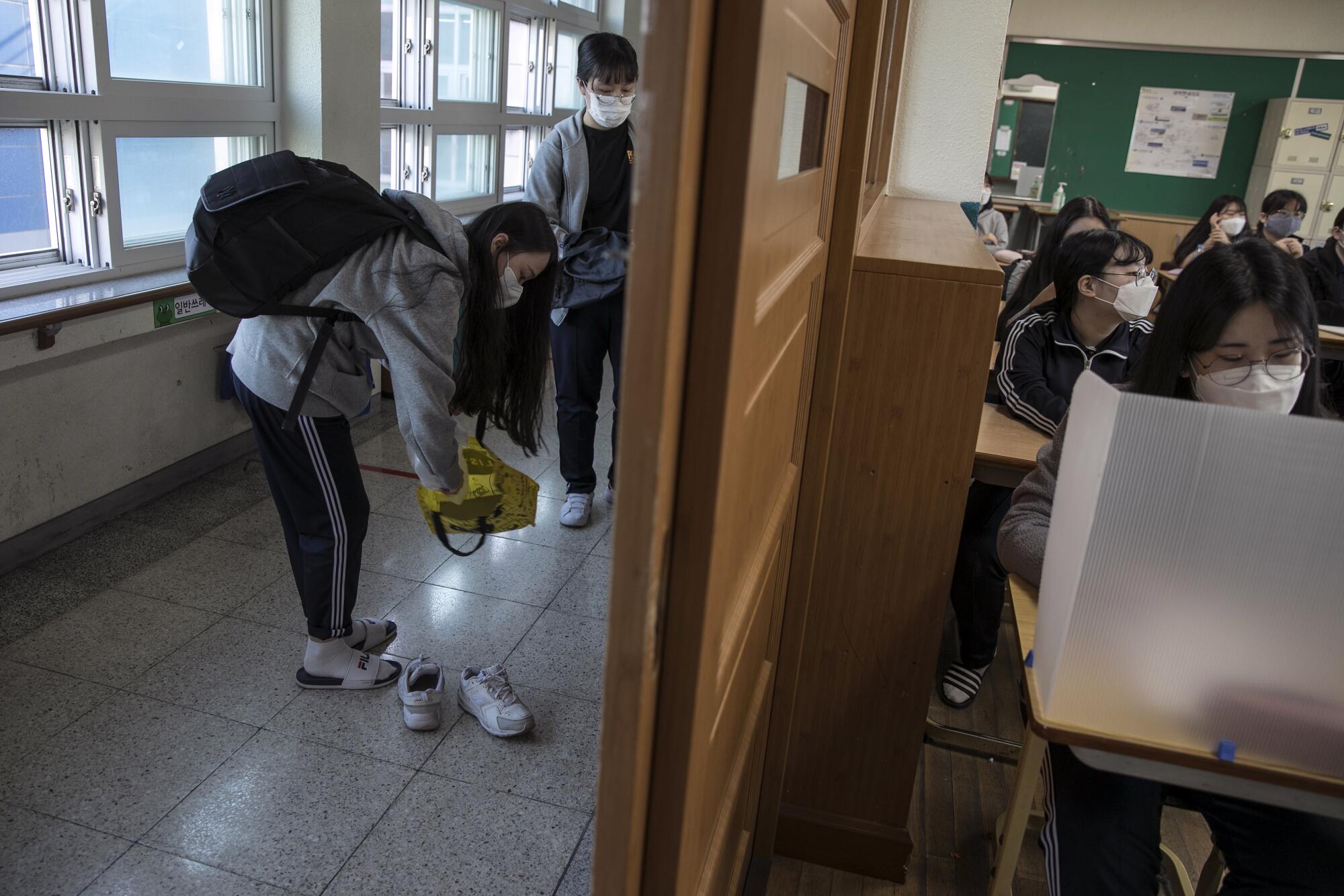
“Exercise is the best medicine,” a teacher had written on a white board on one side of the gym.
At the end of the day, after seventh period, came the hour school administrators had been most anxious about: lunch. Masks would have to come off, and the kids were going to be the most relaxed and chatty. The school had adjusted the class schedules for a late lunch at 1:40 p.m. after the final bell to prevent kids from milling about after eating.
“Keep a distance of at least a meter!” “This way!” “Line up off to one side!” “Stop!” yelled frantic teachers trying to usher the students into the cafeteria in a steady stream.
The kids lined up at blue lines taped to the floor and rubbed their hands with sanitizer before entering the cafeteria. They dined on kimchi fried rice, pork katsu and apple juice in tables sectioned off by clear plastic barriers.
They then headed home for the day, bidding friends goodbye until — hopefully — the next morning.
More to Read
Sign up for Essential California
The most important California stories and recommendations in your inbox every morning.
You may occasionally receive promotional content from the Los Angeles Times.

